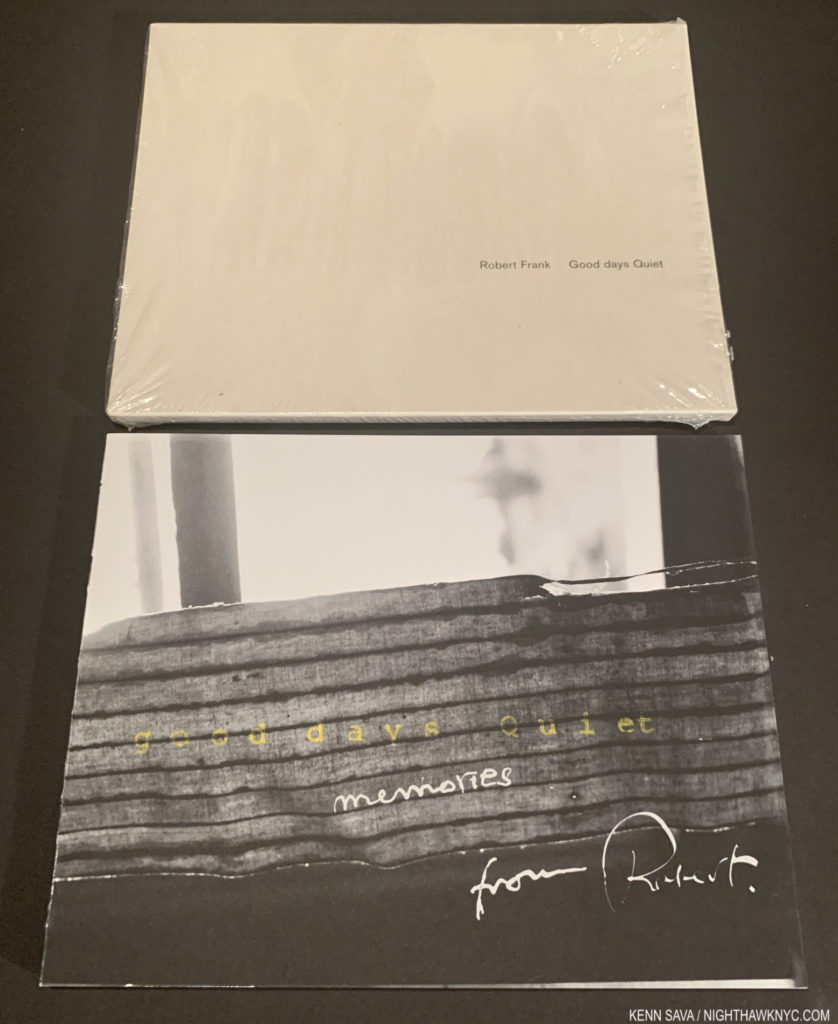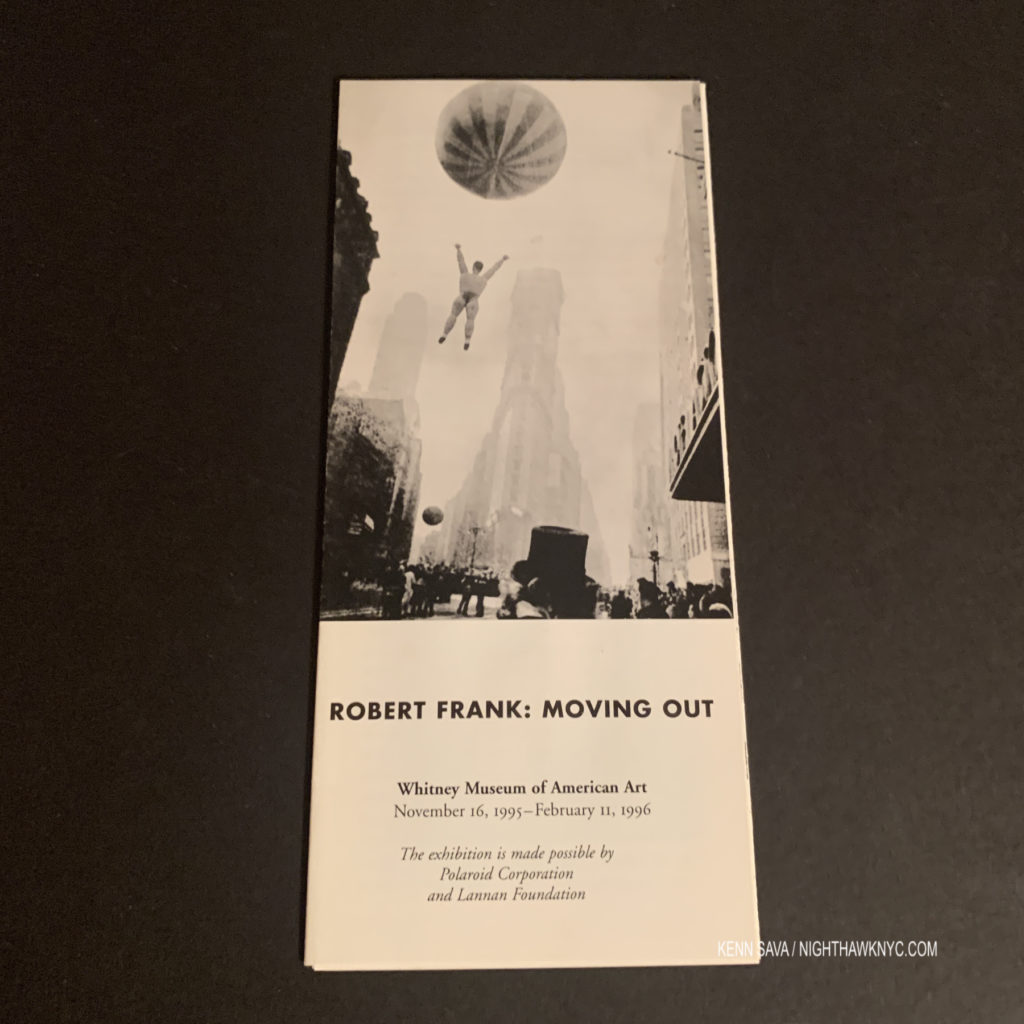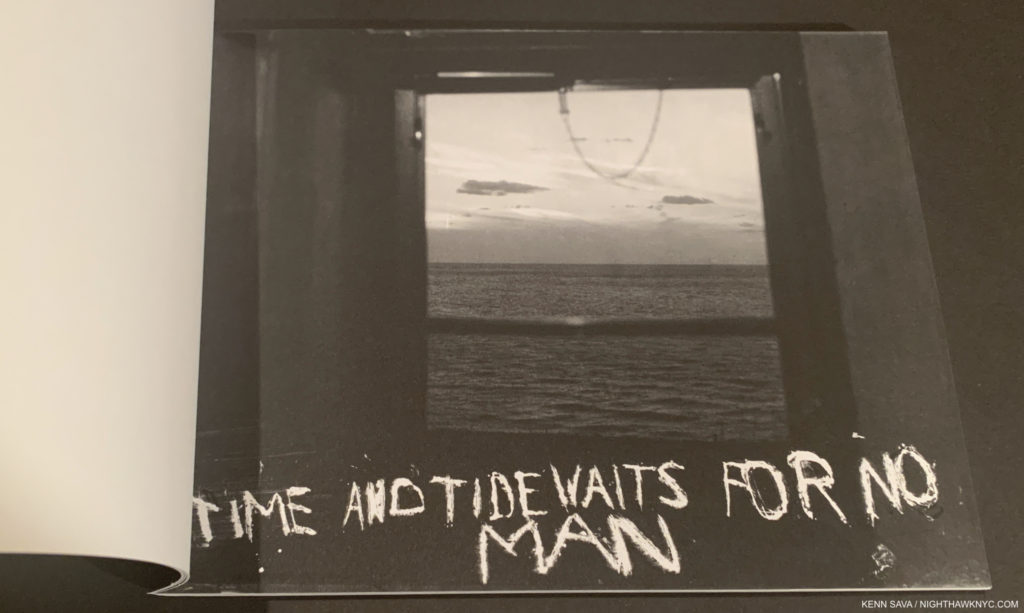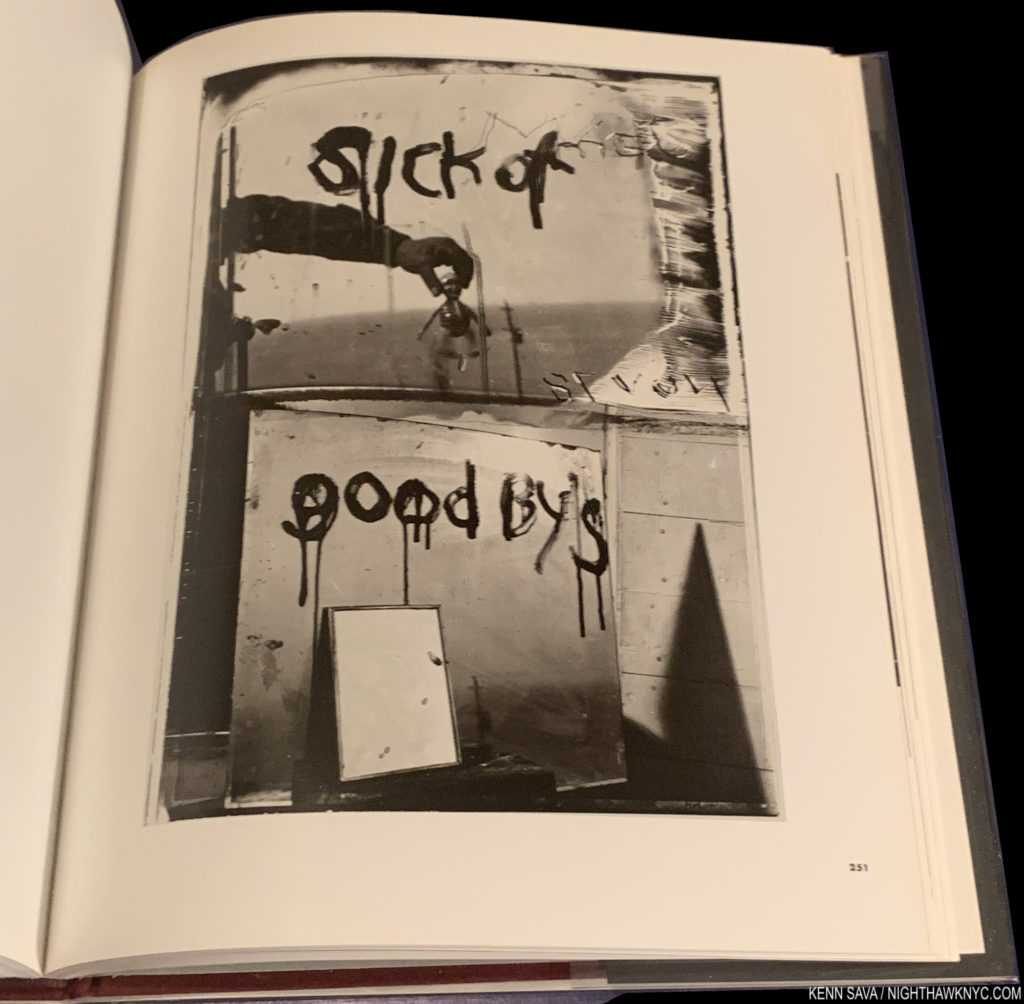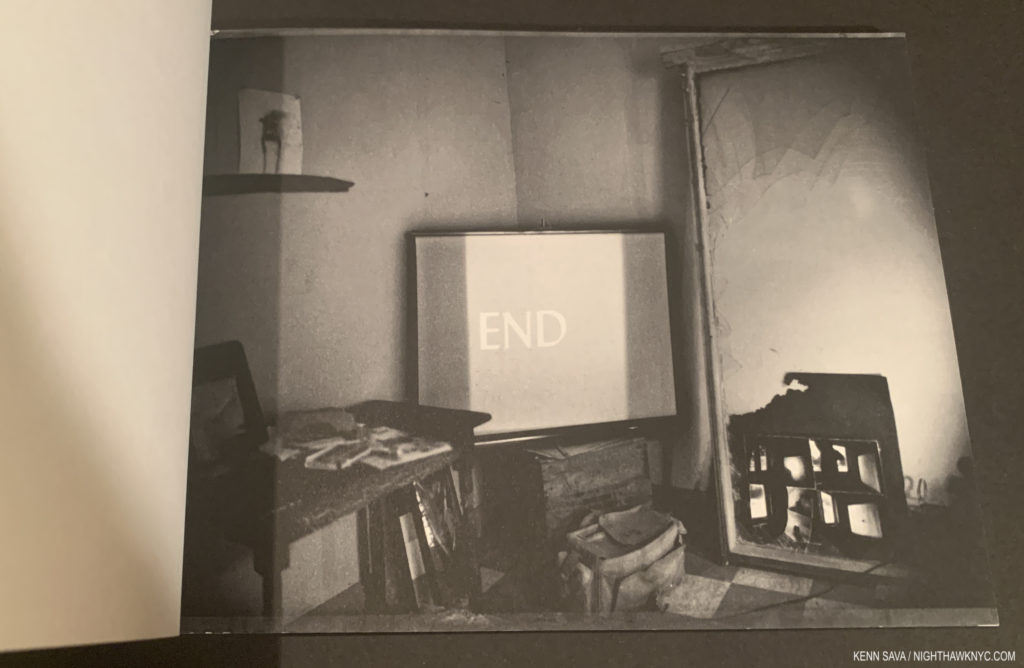Written & Photographed by Kenn Sava
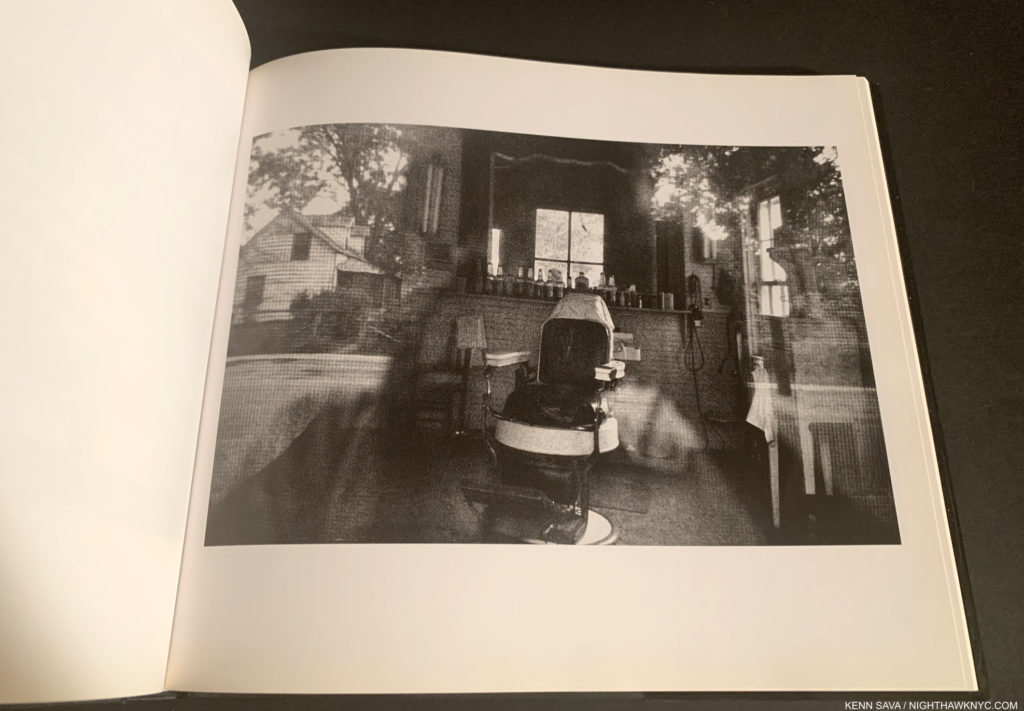
Barbershop through screen door-McClellanville, South Carolina, from the Scalo edition of Robert Frank’s The Americans.
Almost every piece I read on Robert Frank begins the same way. Take the 14,999 word obituary The New York Times published after Mr. Frank passed away at 94 on September 9th, 2019 for example. The body of their piece begins-
“Robert Frank, one of the most influential photographers of the 20th century…”
Stating succinctly what I’ve heard said about him most often. In the 3rd para it adds-
“He was best known for his groundbreaking book, The Americans…1”
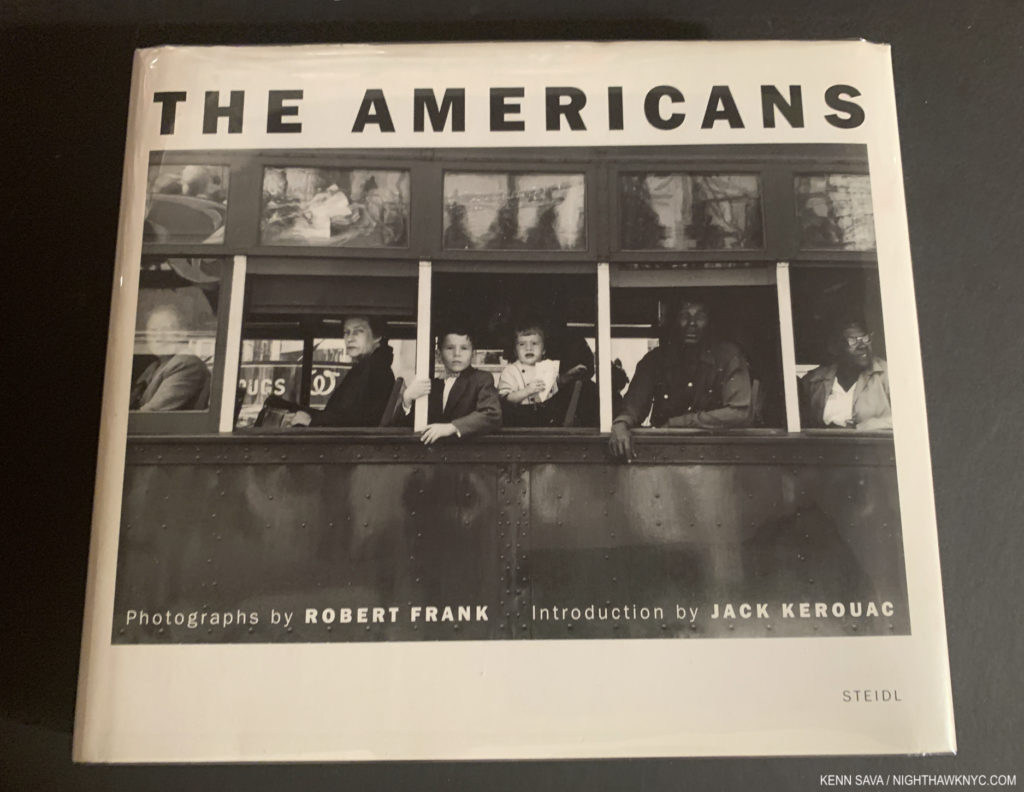
A copy of the 50th Anniversary edition of The Americans, published by Steidl in 2008 in close collaboration with Robert Frank, and so this will remain the definitive edition.
Again, summing what seems to be the consensus I’ve encountered as I’ve explored the world of Modern & Contemporary Photography (which for me, means the world post the publication of said The Americans in 1958, in France, and 1959 here). Yet lurking in that sentence is a problem.
While he is indeed “best known” for The Americans, nowhere in the entire 14,999 word obit is there mention of any other PhotoBook by Robert Frank! That’s typical, too. It seems that for many people Mr. Frank’s exalted reputation rests on that one book. But, Robert Frank, didn’t stop working after publication of The Americans in 1959. He created and published Photobooks regularly over the following SIXTY YEARS! His last one, Good days quiet, was published in April, 2019, shortly before his passing. Yet, it seems to me that this single-book focus also monopolizes the conversation around Robert Frank’s work.
Want proof of that? Quick- name five other books by Robert Frank. [“Final Jeopardy!” Music plays…] Ok. Three.
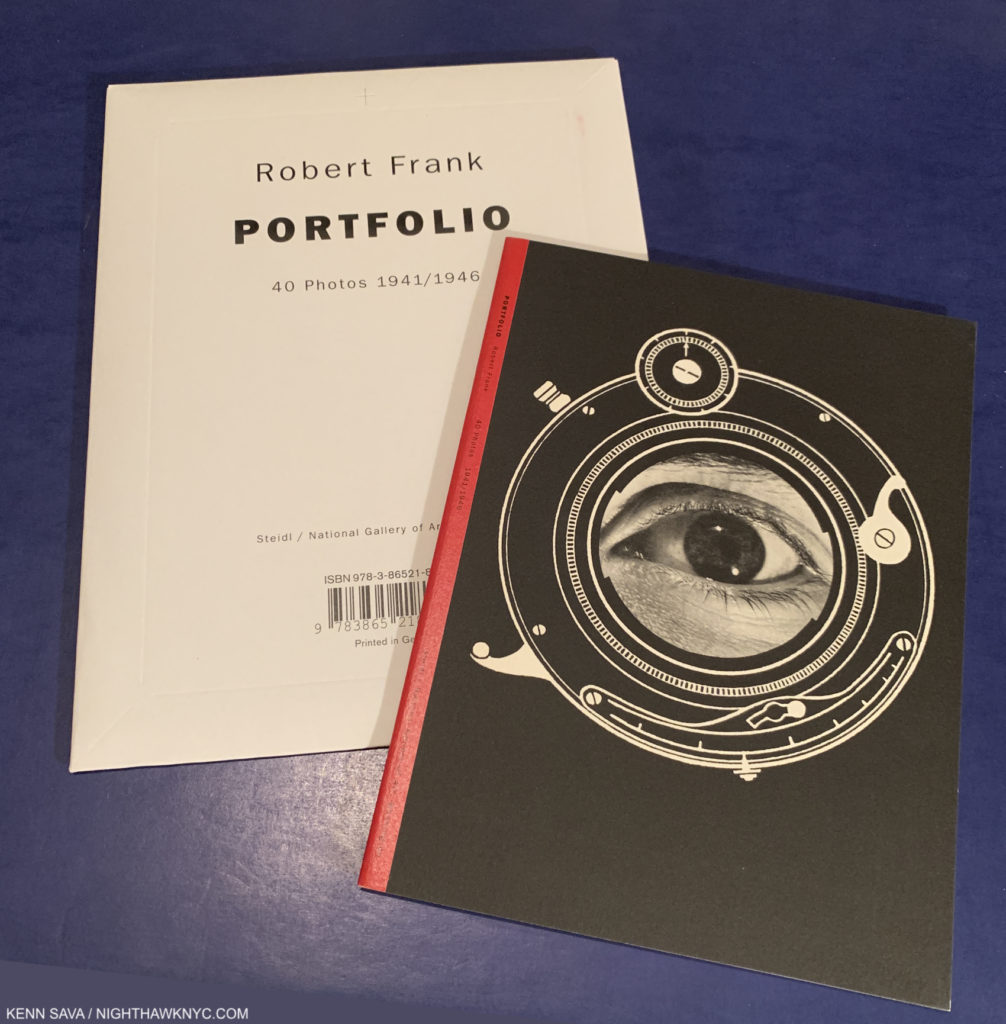
It all began here. Robert Frank, Portfolio, Steidl facsimile edition. Containing a selection his early work, 1941-46, Mr. Frank presented the original to prospective clients after arriving in New York from Zurich in 1947.
The Americans singlehandedly created the genre of Contemporary Photography spawning countless thousand of books in its wake. Yet, given his reputation, it’s kind of amazing Robert Frank’s “other” books have received so little attention. Especially after you see them. It would be easy to account for that saying, “Well, there are more PhotoBooks published today than ever before.” Most PhotoBooks come and go having only created a ripple in the vast world of human awareness. True, but, these are different. Full of poignancy, daring, surprising juxtapositions of the new and the old, they don’t hesitate to break rules. And, they are the work of Robert Frank, “one of the most influential….” oh, you know. Whereas The Americans, and his prior books, like London/Wales (another masterpiece in my view), contain work that looks at the world, his subsequent books largely look inward. In a number of the images a sense of loss is palpable.
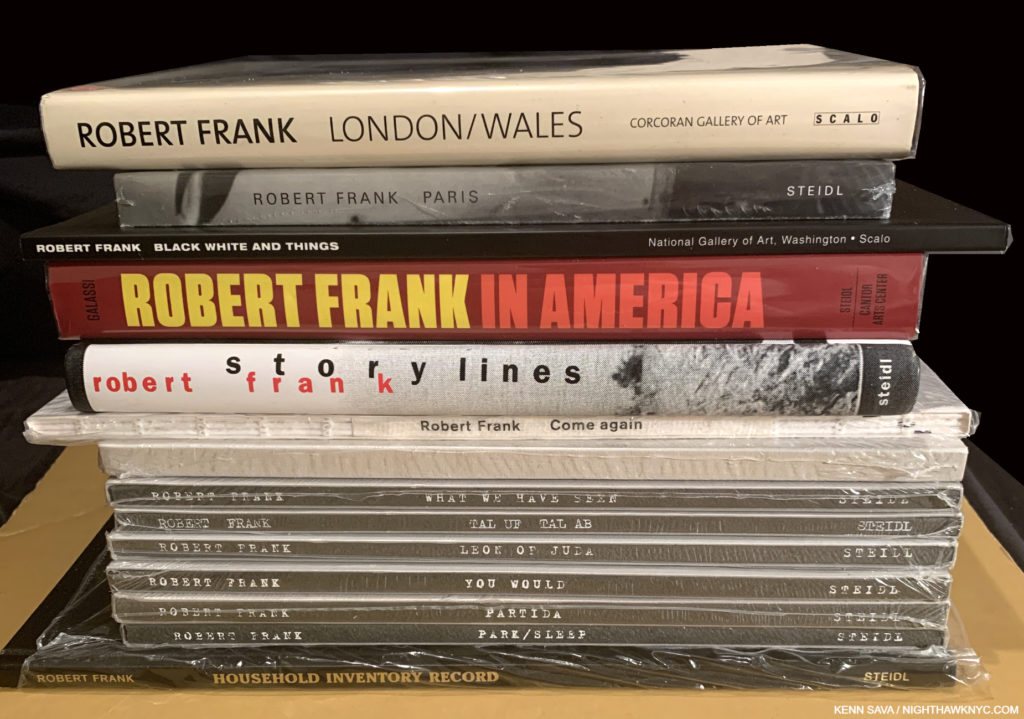
Fourteen “other” Robert Frank books. The 7 on the bottom are his late Visual Diaries, discussed further below. Good days quiet is above them. Robert Frank: In America, not by Robert Frank per se,contains about 100 Photographs that are not in The Americans. And so it provides an excellent chance to study Robert Frank’s image selection, invaluable for anyone considering making a PhotoBook.
Without having familiarity with most, if not all, of Robert Frank’s PhotoBooks, it’s not possible to have an understanding of him or his accomplishment. Given his key position in Photography of the past 60 years, by extension, it’s pretty hard to be able to understand the accomplishment of anyone else working in this era. Realizing that I, too, was in this boat, seemingly adrift in the fog of ignorance, I decided to do something about it last year during the lock down. I began hunting down every OTHER Robert Frank book I could find. What I found was, frankly (sorry), astounding, but, I really shouldn’t have been surprised.
In 1995 I saw the Robert Frank: Moving Out Retrospective at the “old” Whitney Museum. At that point, I had a copy of The Americans, but knew nothing more about his work. What I saw that day was indelible. The greatest (of the few) Photography shows I’d seen before 2005’s Diane Arbus: Revelations at The Met. It showed me that Mr. Frank never stopped creating or exploring his vision. Later in his career (as it was in 1995), he had taken to writing on is prints and I was stunned by them. They were “raw,” yes, but they were also revolutionary. I immediately ran out and bought the exhibition catalog, unheard of for this Painting guy at that point. The impact of those later Prints, and the retrospective as a whole has stayed alive with me ever since.
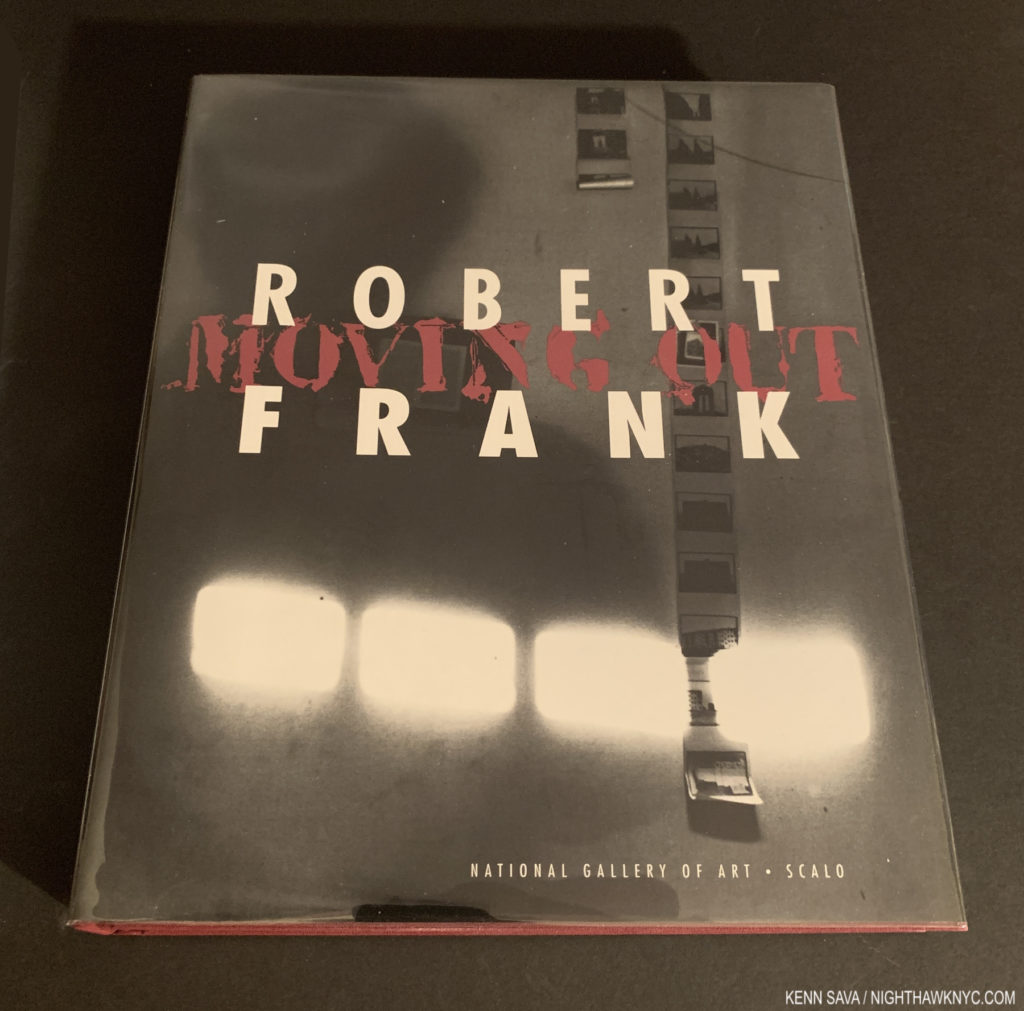
Robert Frank: Moving Out Exhibition Catalog. Ostensibly not “by” Robert Frank, is still a spectacular book, and the best overview of his work to 1995 there is with excellent, informative essays and gorgeous reproductions (it was printed by Steidl). Copies in Very Good, or better, condition trade quite reasonably as I write this.
But, I still hadn’t seen his other PhotoBooks, and as we all know, a PhotoBook is a unique way of presenting Photographs that has proven itself to be every bit as vital and effective as hanging them on a wall- even on the walls of the Whitney. Mr. Frank is, perhaps, the master of image selection, and laying out & sequencing a PhotoBook, skills that are apparently in short supply based in many of the books I see each year. If they have no other values (which they definitely do) they are portable “master classes” in the Art of making a PhotoBook.
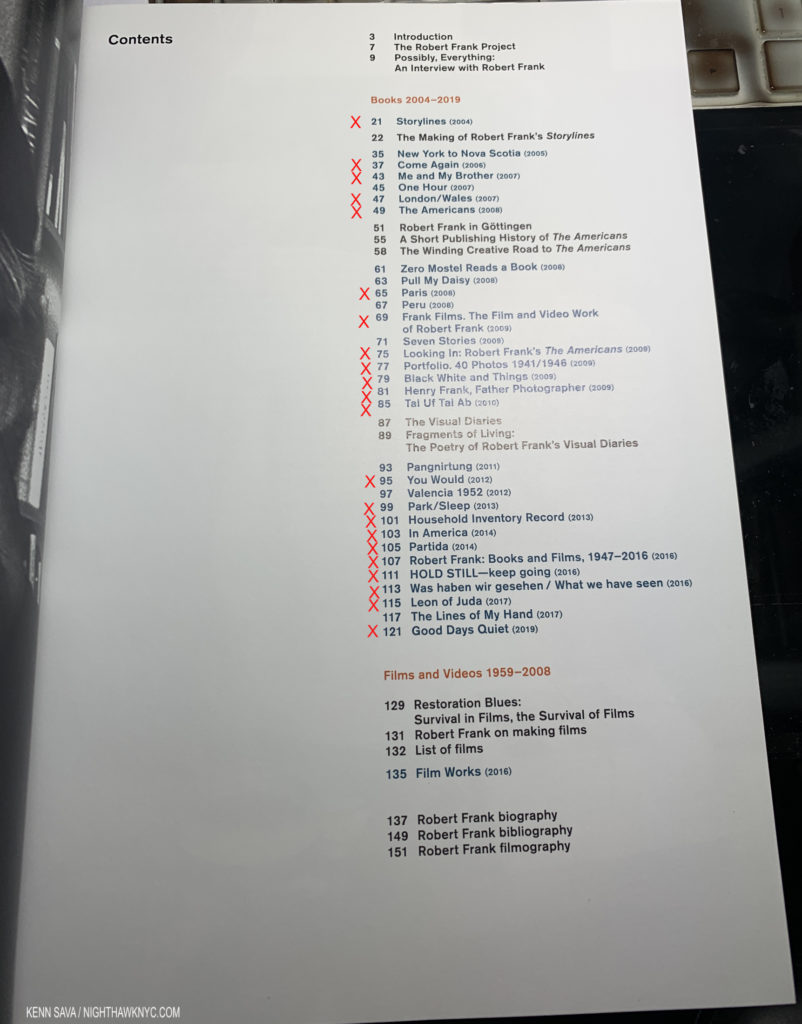
The Table of Contents for Steidl’s overview (shown 2 pictures down) turned into my checklist of books seen so far. Some of the uncheck entries are essays in the book.
To date, I still haven’t seen all of his books. I’m up to 22 of them. Luckily, almost all of Robert Frank’s books have been reprinted over the years and most remain in print, due to his relationship with the renowned Gerhard Steidl of Steidl, making the newer editions relatively affordable. After publishing the terrific Storylines in 2004, the pair began work on the 50th Anniversary Edition of The Americans, which is the version that will now remain Robert Frank’s final word on the classic.
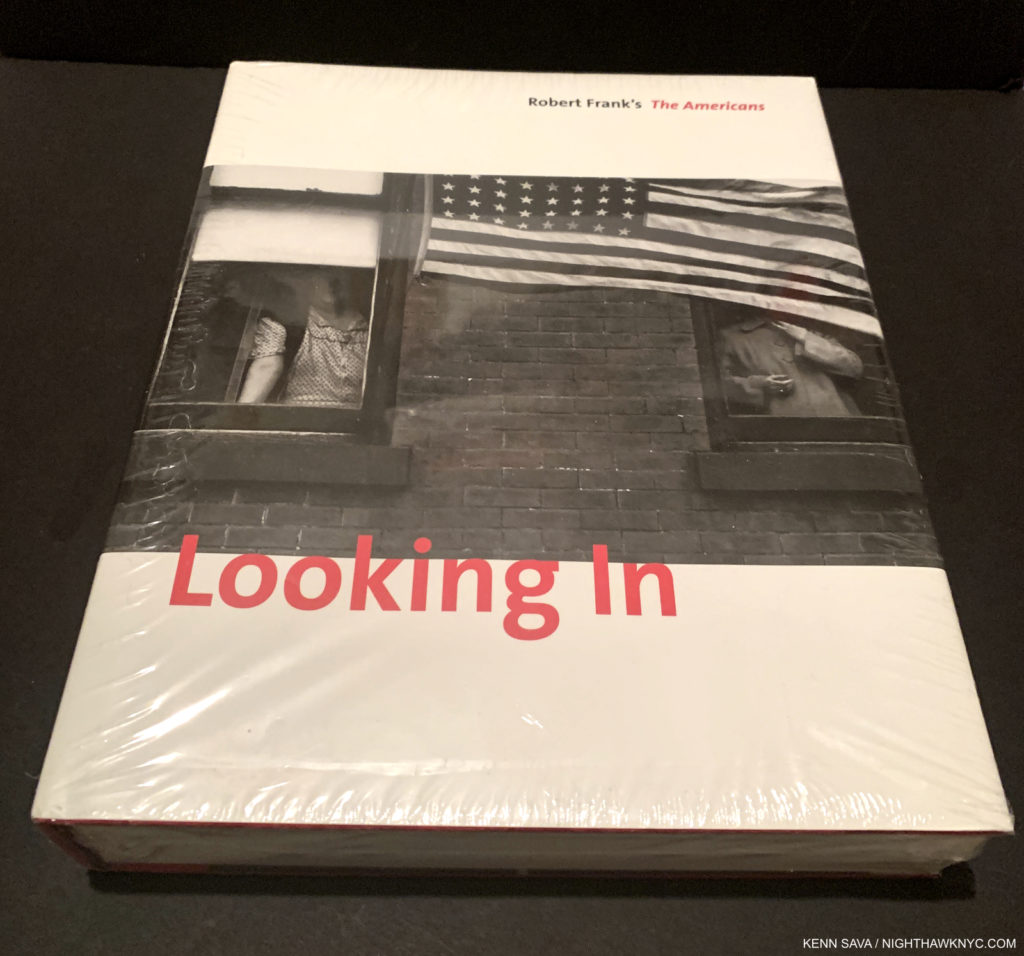
Looking In: Robert Frank’s The Americans: Expanded Edition accompanied the show of the same name honoring The American’s 50th Anniversary I saw at The Met in 2009. And so, it is the final word on The Americans during Robert Frank’s lifetime and the ultimate reference on it. Another book not “by” Mr. Frank it is exceptionally thorough and the hardcover Expanded Edition seen here contains the 83 contact sheets the images in The Americans came from! (NOT included in the softcover edition.) It’s also enough of a “making of” book for students to study how The Americans came into being. Highly recommended.
Since those two volumes Messers Frank & Steidl have produced a steady stream of books.
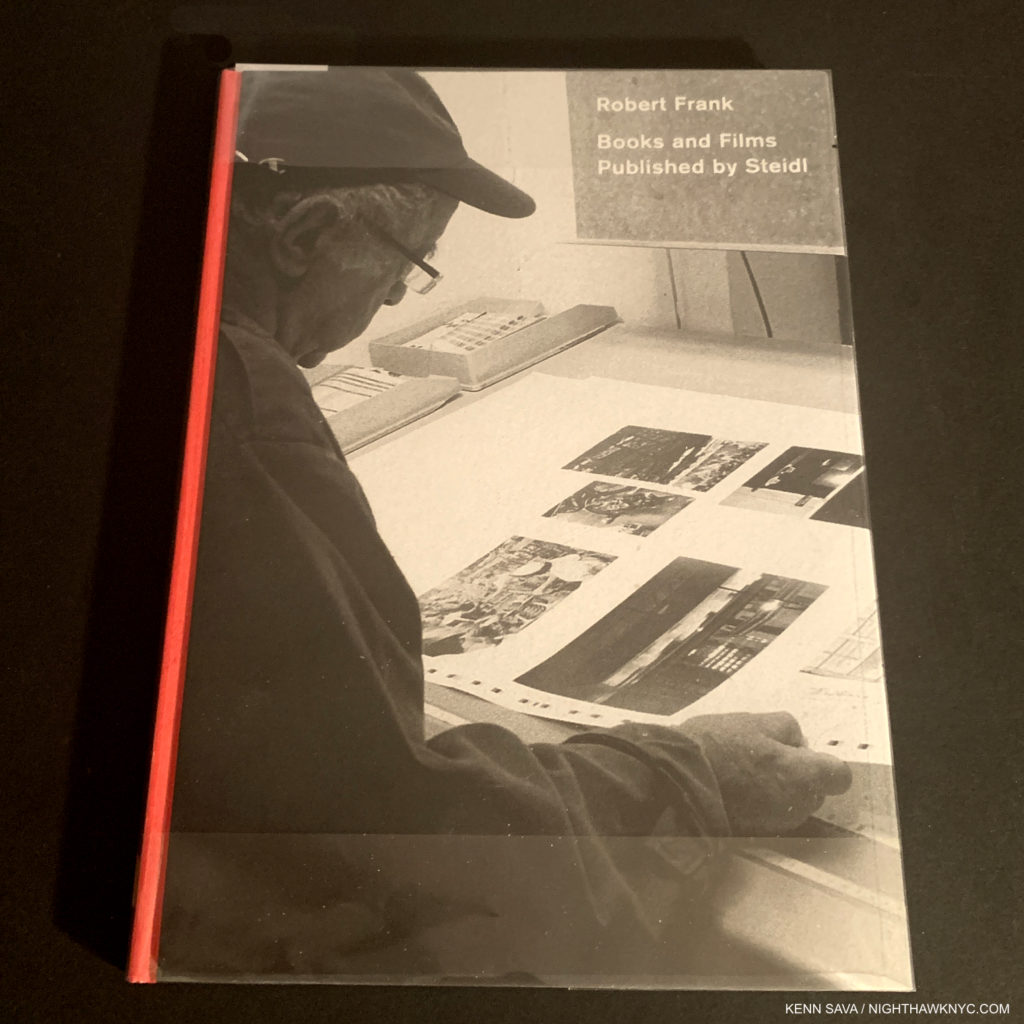
Robert Frank: Books and Films Published by Steidl, 2020. The best place to start exploring Robert Frank’s “other” PhotoBooks.
In 2020, Steidl honored and revisited their collaborations with an overview of all the books titled Robert Frank: Books and Films Published by Steidl. Succinct and well-produced it is the best place to start exploring the PhotoBooks of Robert Frank and the best place to determine where to turn next in your own journey through them (with the Moving Out catalog the best place to explore his work: his Photography & Film to 1995). Each book is shown chronologically and gets a section of its own by Steidl publication date with thumbnails and historical & publishing info. Here, you can get a taste of each book before diving in.
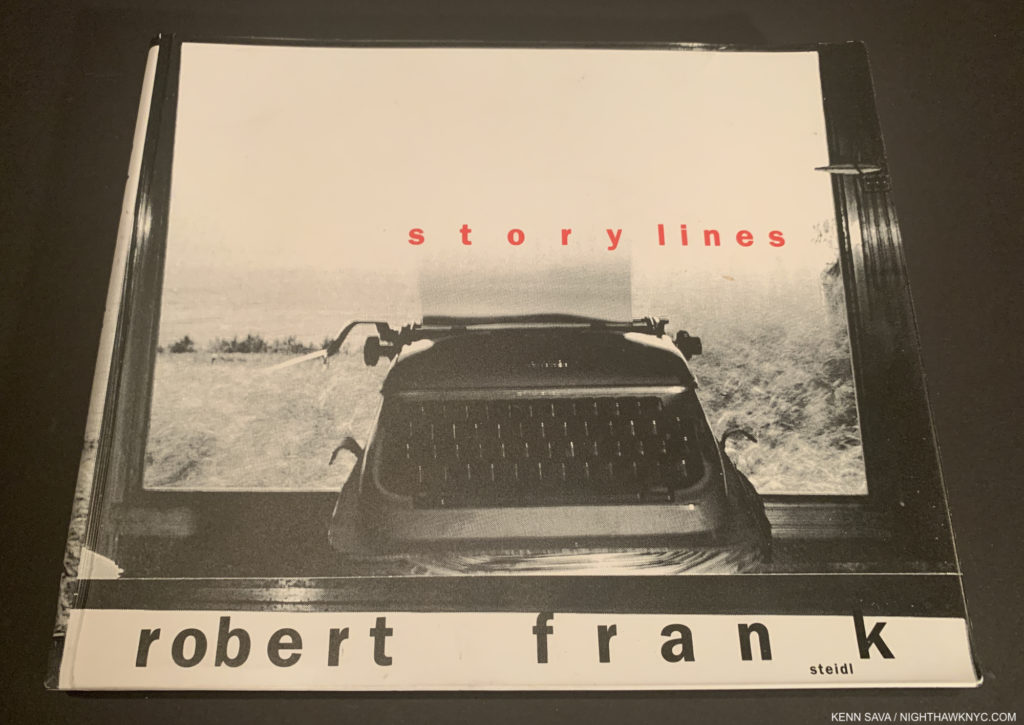
Robert Frank: Storylines, 2004, the first Robert Frank/Steidl publication is auspicious given what followed, and remains the best retrospective of his work. Steidl is preparing to reprint it.
From what I’ve seen thus far, after The Americans, he turned his camera inward. His later work, renowned for its “rawness” as the NY Times obituary put it, often feature poignantly “raw” images of his life and feelings. This is seen best, perhaps, in his late 7 volume Photo Diary series. They are a truly unique body of PhotoBooks that at once look back (by including vintage Photographs- some familiar, some not), and more recent shots, brilliantly laid out, with each book not containing too many Photos. This gives each book an internal sense of space that allows the Photos room to breathe. The book design, by Messers Frank and Steidl, with assistance and input from Mrs. Frank, the under-appreciated Artist, June Leaf, is simple and clean, but fresh and new at the same time, as you’d expect from two master craftsman who each bring a lifetime’s experience to each book. Mr. Frank began with a book dummy and the feel and design of these has been pretty faithfully reproduced by Steidl. These are not luxury items. They are produced to be picked up and looked through in functional yet non-pretentious materials.
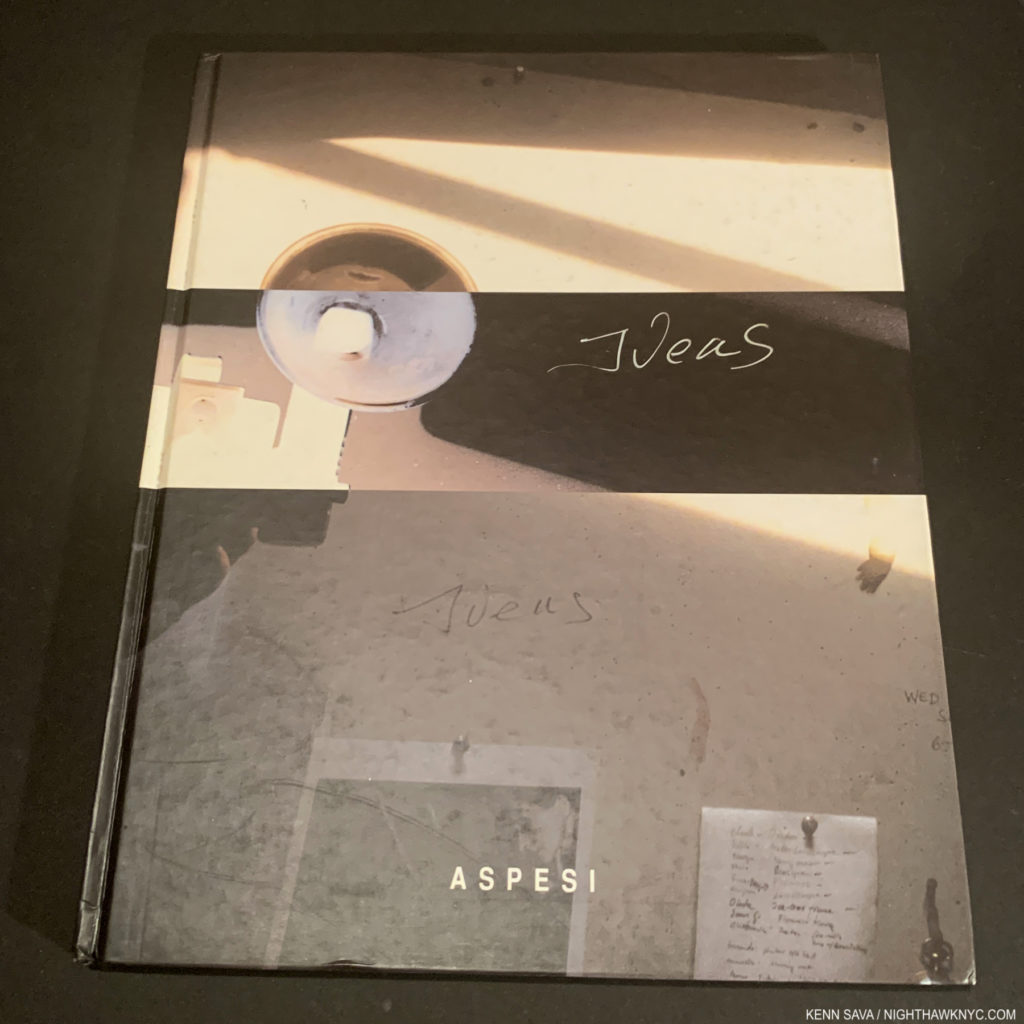
Little known is that Robert Frank was commissioned to shoot catalogs for Milan designer Albert Aspesi titled Aspesi Ideas. This is a copy of the 2nd of the 3 he did. We shouldn’t be surprised by this. After his arrival from Zurich, he did over 150 fashion shoots for Harper’s and Junior Bazar. Even great Artists have to pay the bills.
I’m not going to give a book by book breakdown here. It would take a book to do so. And now, there is a book that does just that, Steidl’s tribute/overview Robert Frank: Books and Films Published by Steidl, 2020,, traces the entire history and legacy of the German publisher’s work with Robert Frank, including both books it republished and brand new PhotoBooks. It’s the best place to start for anyone looking to get an overview, or to choose where to go next in exploring the published work of Robert Frank.
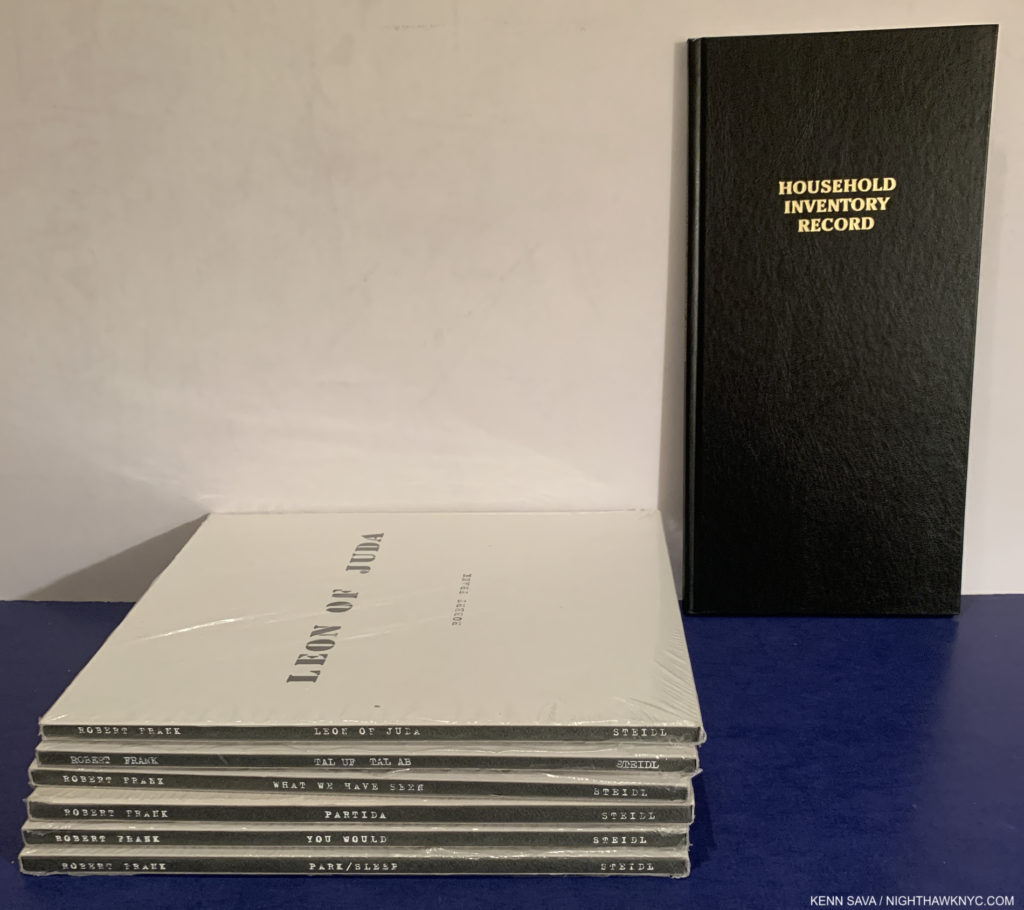
The six volumes of Robert Frank’s Visual Diaries, 2010-17, six in a similar design- a softcover in a slipcase, left, with Household Inventory Record, 2013, designed to look like the original which was created in an actual Household Inventory Record book.
Highlights? For me, it’s very very hard to single any of them out. They are part of a continuum that spans and tells the story of one extraordinary Artist’s life. Luckily, as I write this, virtually all of them are still in print and available at or close to list price. Assuming you have The Americans, I would recommend starting with Steidl’s overview. Look through it, read the introductory summary about each book, look at its thumbnail images and see which one(s) speak to you. Storylines, which accompanied a 2004 European touring retrospective exhibition, is Robert Frank’s look at his own career in a book he obviously had (from the look at the making of it in Steidl’s overview book) a central role in designing as well as a close involvement with the underlying show (we’re told in the introduction). And so it remains the best place to see his career through his eyes. It also set the stage for what would follow from the Frank/Steidl collaboration. Also essential in my view is the early London/Wales, which Steidl reissued, and which sets the stage for The Americans. Of the books after Storylines, the “Visual Diaries,” were the big surprises for me. Tal uf Tal ab (2010), You Would (2012), Park / Sleep (2013), Partida (2014), Was haben wir gesehen/What we have seen (2016), and Leon of Juda (2017) strike me as being akin to as close to a “PhotoBook Autobiography” as we’re likely to get. Household Inventory Record was released in 2013, a reproduction of the actual Household Inventory Record book Mr. Frank created it in. A mix of new and old Photos, typically brilliantly sequenced, they break more rules than they follow. Six of the seven are identically sized and come in matching slipcases, as shown above, while Household Inventory Record is a reproduction of an original created in a standard Household Inventory book. It’s pretty hard for me to single one of these out, so I decided to start with the first volume,Tal Uf Tal Ab. They contain between 29 and 68 Photos each. Good days quiet, 2019, being his last book is also essential in my view. Not part of the Visual Diaries per se (it is the same size as the 6 Visual Diaries, though in a different format), it nonetheless carries some of the feeling and style. Intended as a “final” book, or not, it nonetheless is a moving work showing that Robert Frank had lost none of his considerable skills as a Photographer, editor or book creator.
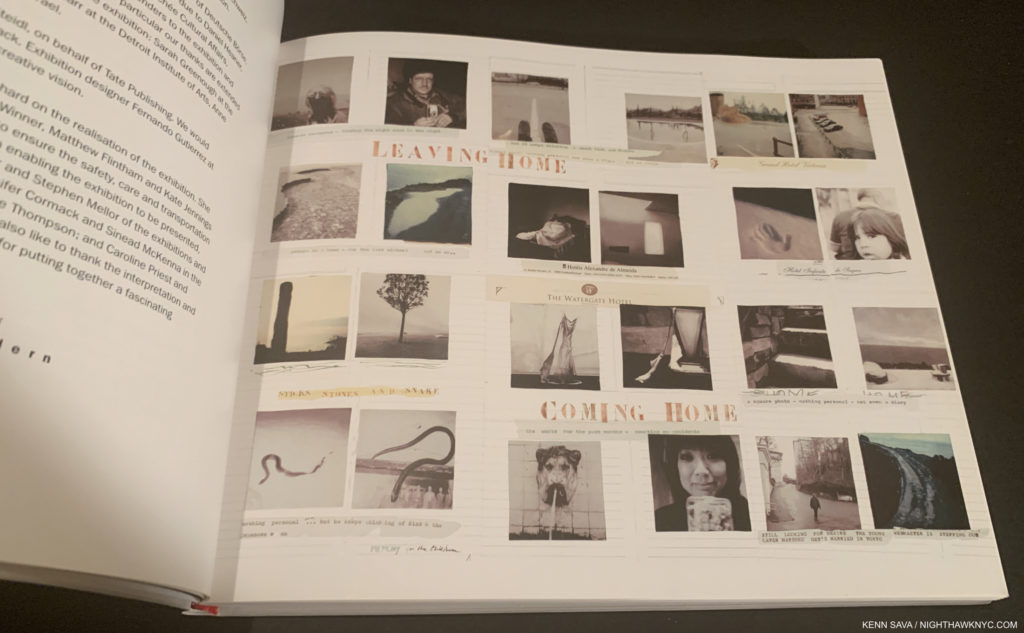
From Storylines. Pieces like this seem to meld Film and Photography as Robert Frank continually stretched out the ability of Photographs to tell a story.
While a biography of Mr. Frank has already been published, the time is here for the critical studies of his entire body of work to begin. Given Moving Out was 26 years ago, and Storylines, which never traveled to the US, 17, the time is also here for a full scale retrospective. The Americans continues to receive the attention it’s earned. No PhotoBook or Art Book collection should be without it. Yes, no library of any kind of books should be without it. Robert Frank’s “other” PhotoBooks created in the following sixty years shows us a different, inner, landscape- its depths, its wonder, its beauty, poetry and tragedy are no less compelling. They complete the picture Robert Frank showed us, and the journey he took us on.
Meanwhile, his Art continued to grow and expand, in my view. It’s full of innovations that have largely flown under the radar compared to his early work. But those innovations are not lost on Artists & Photographers who have been creating along side, or since he created them.
In much of later Robert Frank I get the feeling that he was crossing the boundaries between Photography & Film, with his writing on his prints and especially his collages, which are daring and almost completely overlooked. While his early work already looks timeless to us, there is much else in his oeuvre that remains to be discussed, understood and appreciated. This is like the late work of a number of other Artists from Picasso to Rauschenberg. Luckily, much of this work is there to be seen by all of us right now in the books he created.
Having seen 22 so far, I look forward to seeing those I haven’t yet seen. And then, there are his Films…
*-Soundtrack for this Post is “The Other End (of the Telescope)” Written and performed by Elvis Costello on All This Useless Beauty, 1996, performed in the UK that year here-
NighthawkNYC.com has been entirely self-funded & ad-free for over 7 years, during which over 275 full length pieces have been published! If you’ve found it worthwhile, PLEASE donate to allow me to continue below. Thank you, Kenn.
You can also support it by buying Art, Art & Photography books, and Music from my collection! Books may be found here. Music here and here.
Written & photographed by Kenn Sava for nighthawknyc.com unless otherwise credited. To send comments, thoughts, feedback or propositions click here. Click the white box on the upper right for the archives or to search them. Subscribe to be notified of new Posts below. Your information will be used for no other purpose.
- https://www.nytimes.com/2019/09/10/arts/robert-frank-dead-americans-photography.html ↩

